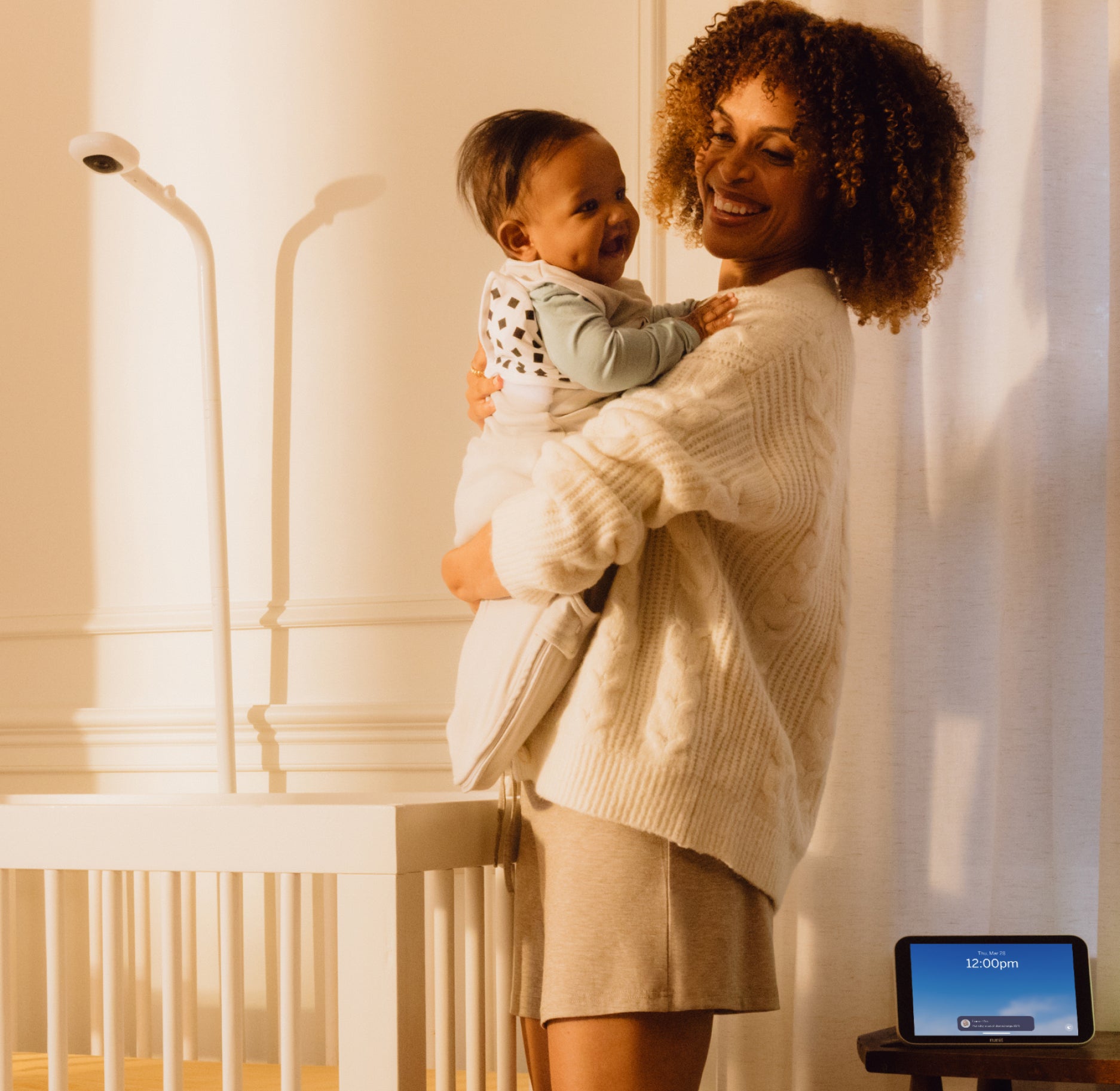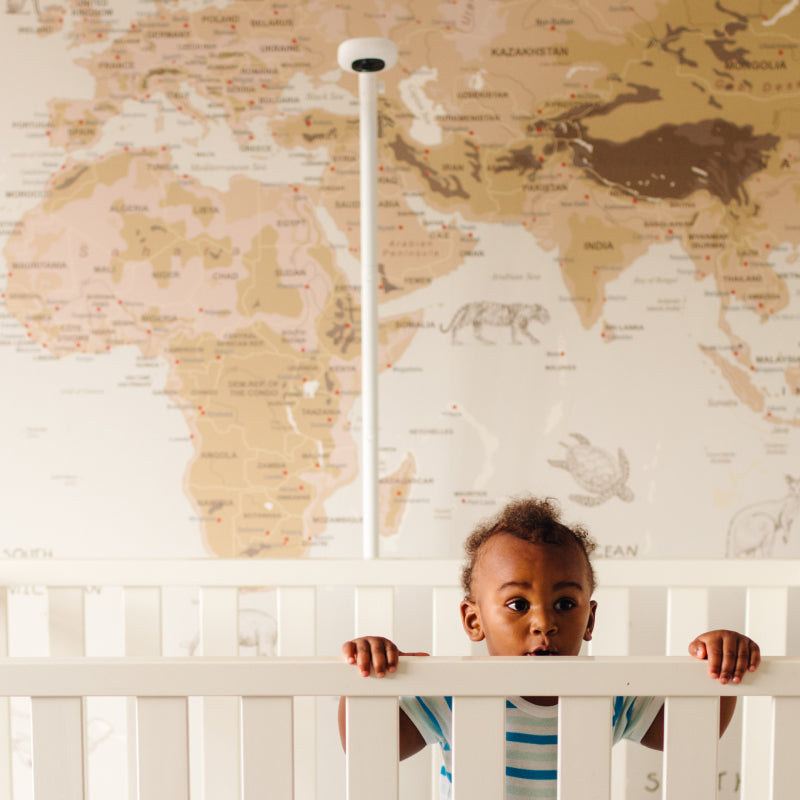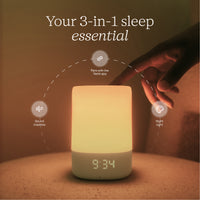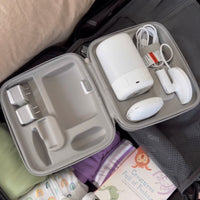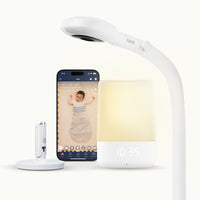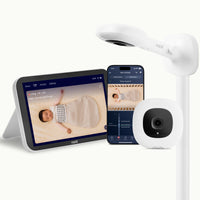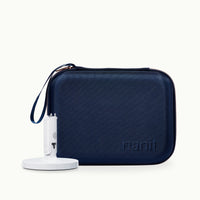Dinner, bath, PJs. Story, snuggles, songs. Every family has their own bedtime routine, made up of any number of different activities, and as parents, we rely on these routines to help our kids (and ourselves) wind down from the day. But now, new science is showing that bedtime routines, including when you finally put your child to bed, play an important role in how well your child sleeps at night overall.
Earlier this year, three new studies were presented at the International Pediatric Sleep Association conference and at SLEEP 2024. The studies, a collaboration between researchers from Nanit Lab, UCLA, and Yale, focused on how factors such as bedtime consistency, routines, tech use, and actual bed timing affected the length and quality of a child’s sleep. The research revealed that babies do better when they have reliable, regular bedtime routines and bedtimes, providing valuable insights into how parents can help their little ones sleep better and longer at night.
Babies and Bedtimes
Does it really matter if you put your baby to bed at the same time every night? In a word: yes.
The first two Nanit Lab studies on variability and timing examined whether bedtimes influence the length of time a child sleeps at night. Researchers looked at how children were affected when their bedtime varied from night to night (for example, 7 p.m. bedtime one night, 8 p.m. another) versus when it was consistent. Researchers called this bedtime variability. The results were intriguing.
The Nanit Lab study found that babies who had a higher bedtime variability (when their bedtimes varied by more than one hour) slept less overall than babies who had a low bedtime variability (went to bed around a similar time each night, within a half hour). What’s more: Even if, on average, the bedtime was the same over two weeks, when the bedtime varied a lot, (by more than 30 minutes) the babies were more likely to sleep less.
The study also showed that the later a baby’s bedtime was, the less they slept overall during the night. As a parent, it’s tempting to suppose that if a child goes to bed later, they’ll wake up later the next morning. But in this study, researchers saw the opposite: Most babies slept less if they had later bedtimes.
As a parent, it’s tempting to suppose that if a child goes to bed later, they’ll wake up later the next morning. But in this study, researchers saw the opposite.
Sleep solution: Try your best to make sure your baby goes to sleep around the same time every night, give or take 30 minutes, and aim for an earlier rather than later bedtime. A bedtime routine–even a 15-minute, simple one–is a great way to help bedtimes stay consistent and let babies get a solid night’s sleep. Establish a simple routine with activities that you and your child enjoy and can easily do whether you’re at home, traveling, or when another caregiver is helping your child go to bed.
The Nanit App and Sleep Schedule Generator can help you personalize a routine and schedule, given your child’s behaviors and needs. Plus our new Care Log feature in the camera App lets you log your child’s daily activities, such as feedings and diaper changes, allowing you to see all their activities holistically and quickly get an overall sense of your child’s wellbeing. Nanit’s Sound + Light can also be programmed to help out during bedtime routines with colored lights signaling to your child that it’s time to get ready or to climb into bed.
The second Nanit Lab study, also written with researchers from UCLA and Yale, explored how infant sleep was impacted by two different elements: 1. A regular bedtime routine and 2. Use of electronics before bed. In regards to routines, the study showed that when parents performed the same bedtime routine most nights a week (between six and seven), their babies slept on average 22 minutes longer than the babies of parents who only used the same bedtime routine for three or less nights a week. The results underline how important bedtime routines are to building healthy sleep habits. One important element to avoid in a bedtime routine? Electronics. The study also revealed that children who used or were exposed to electronics, such as a smartphone or tablet, at bedtime slept 25 minutes less at night than babies who were not exposed to electronics. Sleep solution: As with the first study, this one also emphasizes how consistency (this time with a bedtime routine) is key to helping a child get more sleep. Also, if a screen plays a role in your bedtime routine, think about swapping it out for a similar—but not tech driven—activity. So instead of looking at pictures or playing a game on your iPad with your child, read a picture book together (choose one that’s not too stimulating), play with blocks, or utilize a screen-free tech option like playing music or an audiobook. You don’t have to take away iPad time entirely, just shift to something that doesn’t need a screen or use the device earlier in the day if you need to. It’s up to you to fill your child’s bedtime routine with whatever they and you like best. Bubble baths? Beautiful. Music? Excellent. A snuggle and a story? Yes, please. Just leave the screens on the shelf. And make sure that your lineup of activities and your baby’s actual bedtime stay as close to the same from night to night as possible. The payoff? Better, longer sleep for your baby…which adds up to better, longer sleep for you too.
The Tech Effect: How Screens Influence Sleep
Sleep Strategies to Live By



